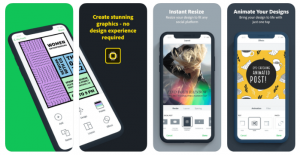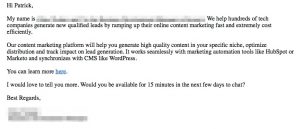There’s something about an underdog that we all love. Whether rooting for the fictional Rocky Balboa or real-life brick-and-mortar store that’s battling against a big-dog corporation, we often throw our allegiance behind an unexpected victor. It’s psychological. And that’s what challenger brands have found when trying to win over a consumer’s heart.
Challengers take pride in marketing themselves as innovators, hoping to bring change to a highly competitive field while reaching customers who may be loyal to an established corporate giant. Think about the arrival of Uber when taxis were the primary mode of transportation — or how grocery delivery apps now are pitted against standard grocery shopping. While originality is one of the major qualities challengers bring to the table, it’s data-based ads, relatability to consumers, and social media that all act together to garner the attention of the right consumer who will buy a product or service.
Marketing a Product That is New and Innovative
The best challenger brands offer products or services that customers may not already have. Marketing these products as something that consumers truly need to improve an existing experience is one way challengers can convert.
When Uber was founded in 2009, it successfully marketed itself as a better alternative to taxis. Uber offered a new form of transportation that was presented as more convenient and affordable. With a few taps on a phone, users were personally connected with a driver who would pick them up within minutes for a rate that was not dependent on the amount of traffic that might be encountered on a route to a specific destination. Uber found huge success in providing a service that customers didn’t know they needed — until they had it.
Zenni Optical provides a new way to get prescription glasses. If users want to ‘try on’ glasses before purchasing, the Zenni Frame Fit allows users to upload a photo of themselves and virtually try on different frames from a wide selection. From there, shoppers can get glasses delivered to their doorstep without ever having to step foot in a brick-and-mortar store. This challenger in the eyewear industry saw a gap and filled it with an innovative idea.
While Airbnb could be considered a challenger brand when comparing it to the traditional hotel industry, the widely renowned brand that offers stays in people’s homes and apartments now has challengers of its own. Onefinestay insists that it is steadily helping to rectify a possible flaw in Airbnb’s business model by having its staff personally visit a home or villa before it is available for a consumer to rent. The company also advertises itself as a luxury and destination service, helping it stand out in a field where the competition feels endless.
“Challenger brands need to be true to themselves and play to their strengths,” according to Spencer Aull, Senior Paid Search Manager at Wpromote, our marketing agency with the tagline The Challenger Agency. “If your edge is being local, then be local. If your product selection has better depth than it has breadth compared to competitors, then dominate that specific product line. Whatever differentiates the challenger business is what should be differentiated in their ads.”
Relating to Customers on a Personal Level
Large corporations often have a hurdle to overcome when trying to connect with consumers due to the sheer vastness of their audience and brand. That’s where challengers can gain an upper hand. They can succeed in relating to their customer on a more personal level by utilizing a specific generation’s culture, social movement and values.
“By honing in on small, niche, target audiences, challenger brands can leverage highly personalized content in their ads without worrying about pre-existing perceptions of their brand,” says Simon Poulton, Director of Digital Intelligence at Wpromote. “Although larger brands will have a greater awareness across the population, this is a double-edged sword. Larger brands have a stronger degree of ingrained brand perception, making it harder to pivot and launch new initiatives without investing more to re-educate the population.”
Glossier, a skincare and beauty brand that represents itself as “inspired by real life,” has been successful with its personalized ads. In a campaign released on the company’s website and social media channels in September of 2017, Glossier depicted five woman of varied body types to promote its new Body Hero products. By showcasing a more diverse set of physical forms that are not usually presented in the beauty industry, Glossier was able to relate to the self-love and body acceptance counter-culture. This “personalization” in the brand’s online presence was positively received by customers and publications alike.
Within the fashion sphere, influencers including Emma Watson and ethical fashion documentaries such as “The True Cost” have helped spread awareness when it comes to ethical production of clothing. Many challenger brands have responded, including Everlane. This somewhat unknown brand preached transparency by featuring a page on its website detailing information on each of its factories where clothing is made. The company also showcases photos of the working conditions alongside details on how it sources materials. This transparency has helped Everlane stand out among the competition and effectively garner greater attention from consumers by joining forces with a social movement.
In addition to relating with specific movements and ideals, many challengers seek to connect with their targeted generation as a whole. In February of 2016, PayPal released a video ad comparing “New Money,” or its online money transfer service, to “Old Money,” or traditional banking. The ad gained nearly 2 million views and smartly created an identity for a brand that relates to an up-and-coming generation of consumers.
Utilizing Data-Based Targeted Ads
Personalization of ads can also occur on a more technical level. While tools such as cookie tracking exist, challenger brands are taking advantage of additional and traditional marketing techniques including search engine optimization. SEO uses people’s search history as a basis for their online search results and can tailor recommendations for sites a consumer might see.
Digital marketing agencies such as Wpromote can also help challenger companies track people’s online purchase data to target ads at potential customers who have bought similar products or services. This data-based targeting capitalizes on a person’s interests and can help connect brands to customers who are truly interested in their products and services.
“Personalization is not just an advantage, but a necessity for challenger brands,” Aull says. “Understanding how users made it to their site or app — and what products or services they may be particularly interested in — will help challenger brands determine the right ads to highlight for each potential customer. The better that challenger brands are at meeting people at the right time with the right message, the more useful the information is to potential customers.”
When it comes to providing ads at the right time, location-based ads can do the trick. This tracking system presents ads for businesses in a particular radius, encouraging a customer to visit that business in real life. Location-based ads can be greatly beneficial to a variety of challenger brands — from brick-and-mortar retail stores to restaurants and lesser-known hotels.
Implementing Interactive Marketing through Social Media
As influential as social media can be for larger brand names, it is even more influential for challenger brands. While many corporations can feel stagnant and impersonal in their social media postings, challengers have truly stepped up their game when it comes to Instagram, Facebook, Pinterest, YouTube and Twitter.
The women’s jewelry and accessories retailer Charming Charlie has done exceedingly well in connecting with its customers through interactivity. Their website features a #CCSTYLE page where customers can upload photos of their Charming Charlie purchases — be it jewelry, handbags, eyewear, scarves or shoes — and show off their personal styles. The retailer also encourages shoppers to post photos with the same hashtag on their Instagram accounts for the chance to be featured on the Charming Charlie Instagram.
Z Gallerie, the furniture and home décor brand, has also stood out on social media with 1 million followers on its Instagram account, challenging many big-name competitors. Not only does Z Gallerie offer an overall sophisticated tone with its photos, but the brand also features giveaways and posts from followers. These simple methods help attract a larger social media following and customer audience.
Marketing a product that is new and original, relating to customers on a cultural level, using data to customize an ad experience and providing an interactive edge in social media are just a few of the techniques challenger brands can employ to compete with larger companies.
Sources: Adweek, The Challenger Project, Advertising Age, Forbes, Moz.com
Digital & Social Articles on Business 2 Community(77)
Report Post




